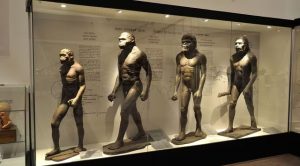“Exciting Study: How Genes Enabled Primates to Walk on Two Legs! Discover the Fascinating Insights Through Biobank Data & AI.”

Long ago, when primates started walking on two legs instead of four, it freed up their hands, allowing humans to use tools. This switch to walking upright, known as bipedal locomotion, was a significant step in our evolutionary history. Now, scientists claim to have discovered the gene responsible for this development.
Using a combination of deep learning and genome-wide association studies, researchers from Columbia University created the first map of the genome regions that led to the skeletal changes in primates, enabling them to walk upright. This map revealed that these genetic changes were strongly favored by natural selection, giving early humans an evolutionary advantage.
Beyond its significance in human evolution, the study also identified genetic variants and skeletal features associated with hip, knee, and back arthritis, which are major causes of adult disability in the United States.
To conduct the study, the researchers analyzed over 30,000 full-body X-rays from the UK Biobank. They used a deep learning algorithm to standardize the X-rays, remove any quality issues, and precisely measure various skeletal features.
By scanning the human genome, they identified chromosomal regions linked to variations in essential skeletal measures, such as shoulder width, torso length, and tibia-to-femur angle. In total, they discovered 145 regions associated with genes that influence skeletal development.
Many of these regions showed overlaps with “accelerated regions” of the human genome, which have evolved relatively quickly compared to the same regions in great apes.
The study’s co-author, Vagheesh M Narasimhan, explained that this is the first genomic evidence suggesting that selective pressure acted on genetic variants affecting skeletal proportions, facilitating the transition from knuckle-based walking to bipedalism.
Overall, this research sheds light on the genetic factors that contributed to the evolution of bipedal locomotion and its impact on human development, offering valuable insights into skeletal health and disability.
